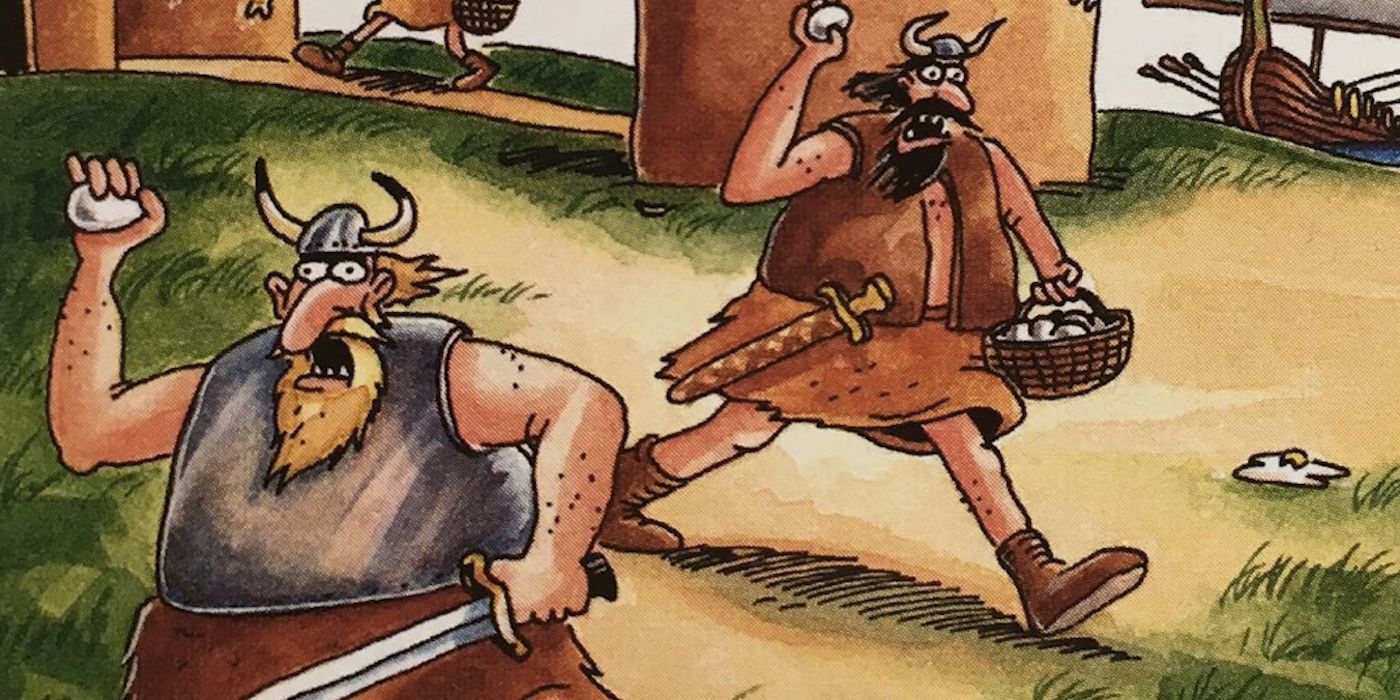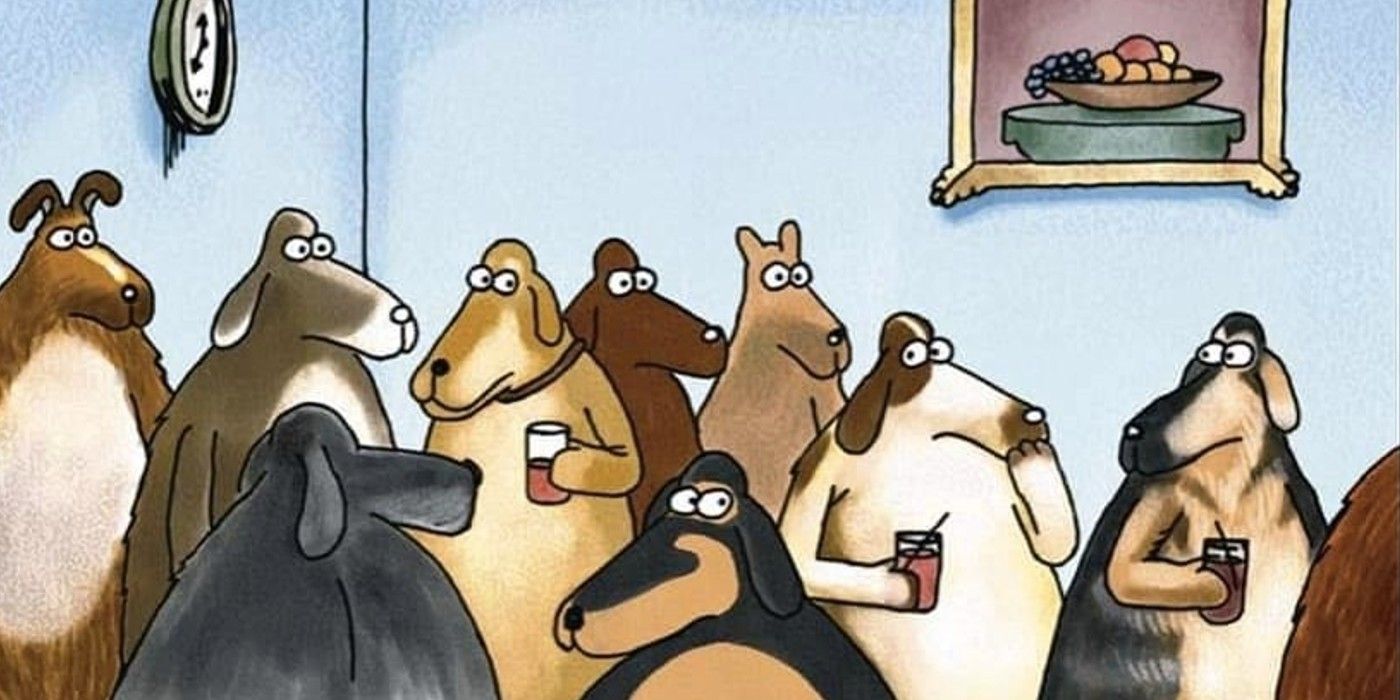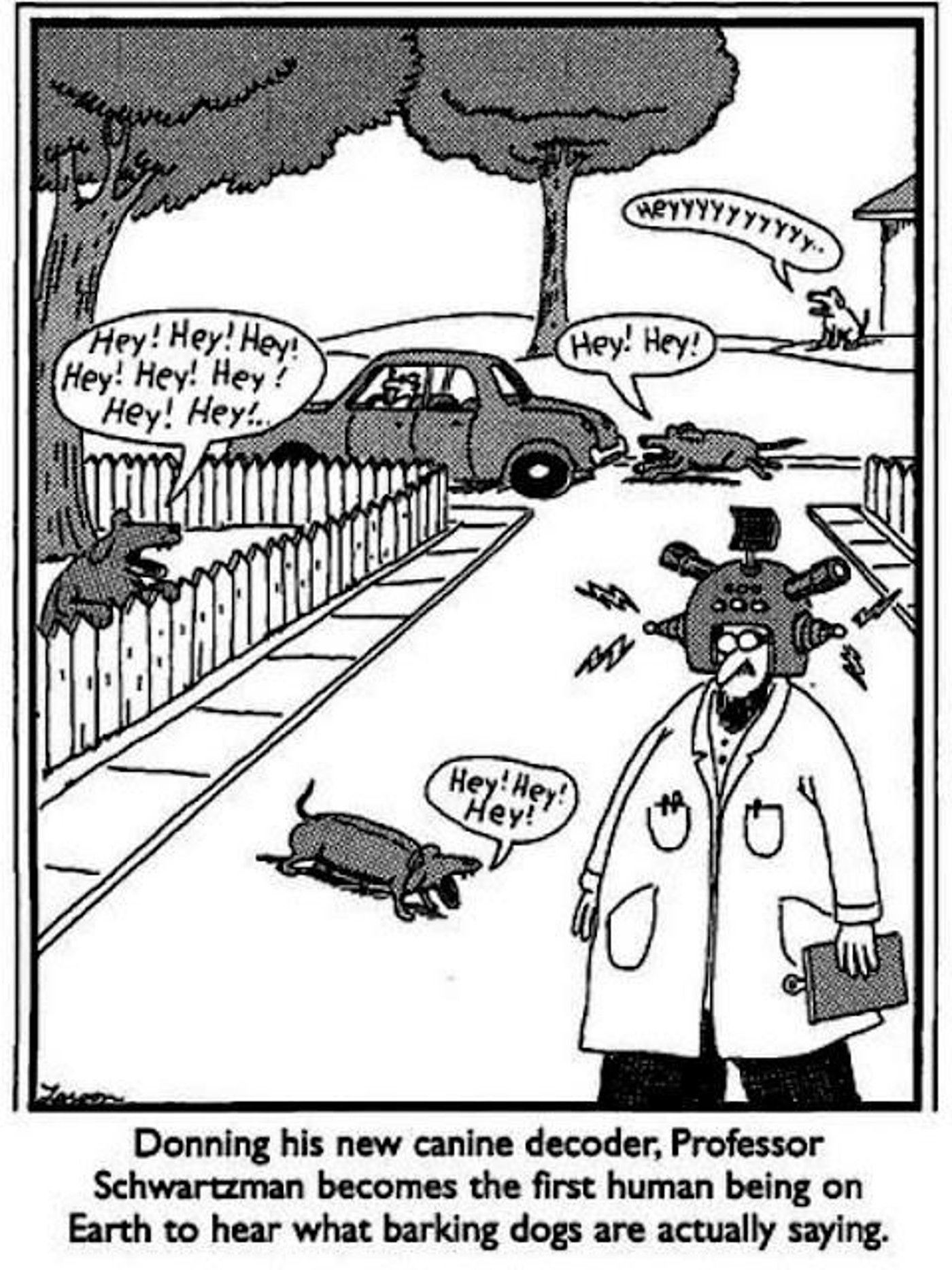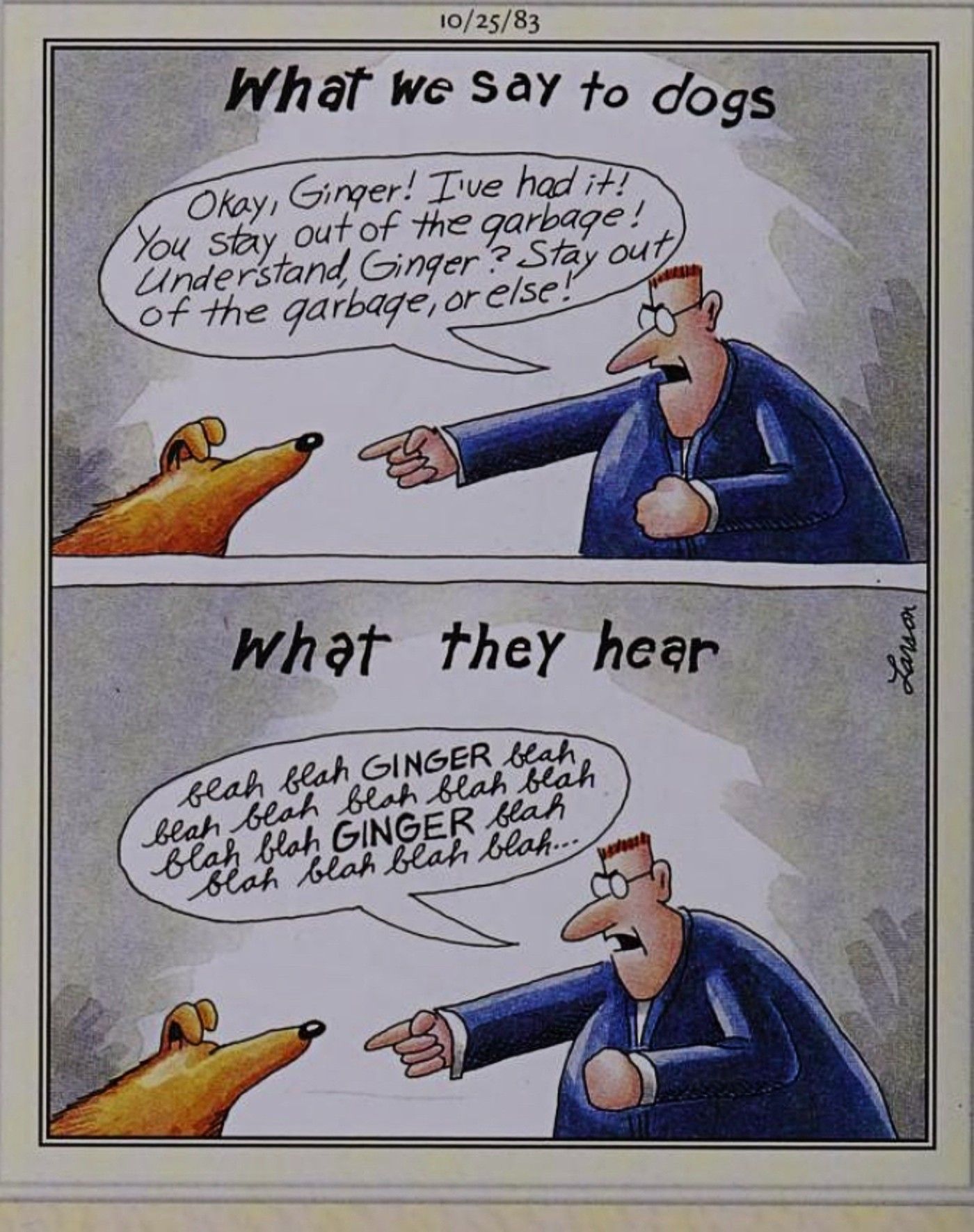Summary
- Dog barks translate as "Hey"—a surprising fact found in a Far Side strip.
- Gary Larson's humor incorporates accurate science in his absurdist work.
- Barking, a product of domestication, served as an early alarm system for humans.
Gary Larson's The Far Side was no stranger to the unreal – but as it turns out, one of its weirdest jokes was also one of its most scientifically accurate. In Larson's world of unparalleled absurdism, dachshunds sit for classical-style portraits, cows plot the demise of Farmer Brown, and crocodiles have their day in court – but surprisingly, dog barks translate the same way they do in real life.
Based on a scientific explanation of dog barking published in Wired, one memorable Far Side strip isn't as silly as it seems. Larson portrays a character named Professor Schwartzman testing his newest invention, a "canine decoder" helmet, which translates what dog barks into English.
Several dogs are visible speaking in the panel, and all of their barks translate to the same word: "Hey." While certainly an amazing payoff to the Professor Schwartzman joke, this panel is surprisingly not far off the mark, scientifically. As a result, it actually stands as one of Larson's less ridiculous dog depictions.
The Far Side's "dog translator" panel was first published on March 25, 1992.

10 Best Far Side Comics That Make Jokes About Real World History
Far Side creator Gary Larson often mined history for the strip's material, in the process revealing how absurd human civilization has always been.The Far Side began appearing in newspapers on December 31, 1979. By the time the series ended its run on January 1, 1995, it had appeared in almost two thousand newspapers worldwide, and been translated into seventeen languages. During its time in publication, Larson penned more than 5,000 surreal, single-panel comics, several of which are still revered by fans today, including the "dog translator" panel."
The Far Side's Interpretation Of Dog Speech Is Surprisingly Spot-On
Barking Is A Product Of Domestication
When animals and humans were depicted together [in The Far Side], the humor frequently came from a failure to communicate between species. In this case, Professor Schwartzman experiences a success, though it still doesn't amount to much.
On the surface, the joke of the Far Side "dog translator" is the countless time and effort spent only to discover dogs really just don't have much to say. Had Professor Schwartzman taken some more time to study canine behavior, perhaps the comic strip's protagonist would've realized the logical (almost obvious) answer that dog barks mean exactly what the decoder expertly translates them as. As detailed by Wired, dog barks actually serve a purpose, one likely tied into their domestication and relationship with humans.
Adult wolves, from which the modern "man's best friend" can trace its descent, rarely bark (generally only if they're startled). It's a much more common behavior among young and adolescent wolves, a means for them to alert the rest of their pack if they're in danger. Domestic dogs are products of artificial selection, not natural: their friendliness, lack of aggression, smaller size, and even barking in adulthood are traits humans deliberately bred them for 50,000 years ago. All of these traits are "neotenic": they're derived from the juvenile stage in the ancestral wolf but maintained in adulthood in modern dogs.
Gary Larson's humor in The Far Side was relentlessly ridiculous, but it wasn't without reasons. Larson's absurdist style was intended to highlight how truly unfathomable and bizarre the human condition is. That includes the inscrutable nature of humanity's relationship with other living beings. The Far Side's writer/artist often used animals –ranging from dogs to ducks, from snakes to bears – as proxies for humans in his humor. When animals and humans were depicted together, the humor frequently came from a failure to communicate between species. In this case, Professor Schwartzman experiences success, though it still doesn't amount to much.
The Far Side frequently depicted dogs, and scientists – and as goofy and unpredictable as they tended to be, Gary Larson's jokes were not entirely detached from reality, at least not when it came to scientific fact.
Gary Larson Loved To Inject Accurate Science Into His Absurdist Humor
The Perfect Blend Fact & Surrealism
The Far Side frequently depicted dogs, and scientists – and as goofy and unpredictable as they tended to be, Gary Larson's jokes were not entirely detached from reality, at least not when it came to scientific fact. In truth, the opposite was the case. Larson's humor tended to be incredibly intelligent, displaying a keen knowledge of science, archeology, history, and technology, just to name a few areas he touched on over the years. Of course, as necessary, he presented a warped Far Side version of reality around these grounded, accurate details, in the strip's patented style.
It is likely that the "dog translator" panel is an example of this. Regardless of humans' original intent, barking has proven extremely beneficial. Early dogs likely served as an early alarm system, warning prehistoric humans when danger was nearby. While we may not notice an encroaching rival tribe, sabertooth tiger, or clan of cave hyenas (genuinely one of our greatest competitors at the time), our dogs would. Barks are simple, percussive sounds that travel over a long distance. They're a great way to get someone's attention, to warn others you see them, or express surprise.
The Far Side Could Get Real – but Only When Gary Larson Wanted To
It Was Gary's World
Larson's dogs often spoke English perfectly fine – as well as engaging in all sorts of complex human activities – but ironically, this panel where they have nothing in particular to say ranks among the most memorable Far Side strips.
In English, there's a simple word that can be used in the exact same manner that dogs use their barks: "Hey." Gary Larson's "dog translator" Far Side panel brilliantly, and accurately, renders this – while doing so in service of a joke at the expense of a poor human scientist, who laboriously attempted to break the communication barrier between species. Larson's dogs often spoke English perfectly fine – as well as engaging in all sorts of complex human activities – but ironically, this panel where they have nothing in particular to say ranks among the most memorable Far Side strips.
The strong scientific basis for Gary Larson's "dog translator" comic emphasizes the underlying complexity to this otherwise simple joke about the absurdity of translating what dogs have to say. Larson pokes fun at the fact that it is already obvious what they're saying. No other word in the English language comes close to carrying the same simple-yet-malleable meanings as a dog's bark. If someone ever took inspiration from Gary Larson's The Far Side and built Professor Schwartzman's canine decoder, it'd be more surprising if "Hey" wasn't the only thing they discovered dogs had on their minds.
Source: Wired



